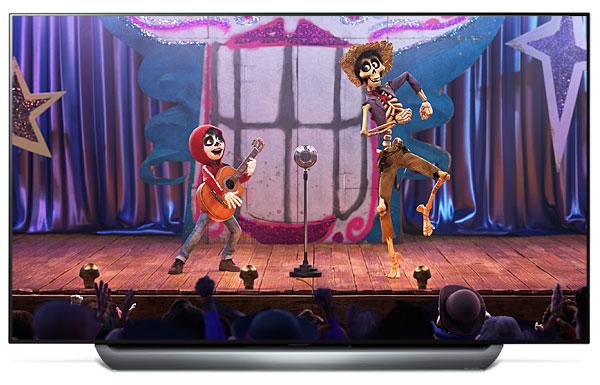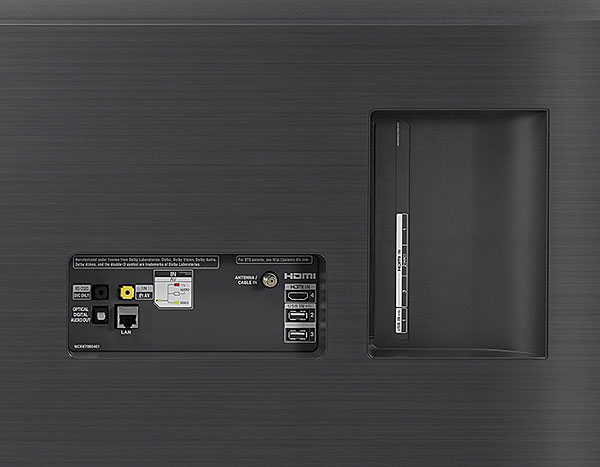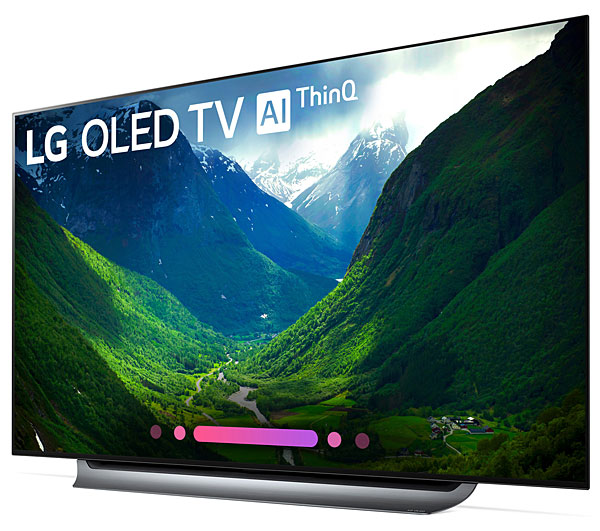LG OLED65C8PUA OLED Ultra HDTV Review

AT A GLANCE
Plus
Deep black levels
Extremely wide viewing angle
Supports Dolby Vision and HLG
Minus
Expensive compared to same-size LCD UHDTVs
Lower peak brightness than LCD UHDTVs
THE VERDICT
This new C8 series set exceeds the performance of LG’s previous OLED models, making it the best OLED TV from the company I’ve yet tested. Its price is also significantly lower than last year’s C7, which means more buyers can now bring home an LG OLED instead of dreaming about one.
The picture quality improvements in LG’s 2018 OLED Ultra HDTVs aren’t a dramatic upgrade over the company’s already superb 2017 sets, but they are accompanied by a new Alpha 9 processor, an autocalibration option, and a few new and updated features. LG has gathered all of these capabilities under the “LG ThinQ AI” rubric. While the AI (Artificial Intelligence) claim may be a bit overstated, that’s where the market is going and LG is not alone in it. I wonder if adding a blinding blizzard of do-everything geegaws makes the screen interface too complex for the average user who simply wants to turn on his or her TV and watch a movie. But while the 65C8 certainly delivers most of the things gadget-savvy viewers want (and a lot that they possibly didn’t know they wanted), my emphasis here is on how the set meets its fundamental task: providing the best image quality possible at an approachable price.
For the newbie who isn’t familiar with OLED technology, an OLED display, unlike an LCD/LED one, is self-illuminating. Each individual pixel is its own light source, and it can go from full brightness to completely turned off as required by the source image. This capability is what gives OLED its notably inky blacks. To even approach OLED’s black level, an LCD display requires LED backlighting with some form of local dimming. And in that case, dimming is limited to a few or, at best, a few hundred zones depending on the LCD set’s design (and cost). There are roughly 8 million pixels in an OLED Ultra HDTV, with each one acting as its own local dimming zone.
Features and Setup
The 65C8 is compatible with HDR10 and Dolby Vision, the two most common high dynamic range formats, plus HLG (Hybrid Log Gamma). Technicolor HDR is also onboard, but it’s primarily a playback Picture Mode (and a promotional feature, since the Technicolor name still commands attention). There’s no such thing as Technicolor HDR at the production end, and no sources are mastered in that format.

Because most UHDTVs can’t show the full peak brightness contained in many HDR sources, a technique called tone mapping is used to preserve as much of that high brightness detail as possible by “folding” it into the set’s display capabilities. For Dolby Vision programs, tone mapping is generated scene-by-scene (or even frame-by-frame) during production and is included as dynamic metadata in the source. But with HDR10 ones, the metadata remains static through the entire program. The 65C8 offers a selectable Dynamic Tone Mapping feature that uses internal processing to analyze content scene-by-scene and convert static metadata to dynamic metadata. This feature was also found in LG’s 2017 sets, but there it was combined with the active settings in the Dynamic Contrast menu selection. For 2018, it gets its own, separate control. Can set-derived dynamic tone mapping— a feature that other set manufacturers also offer—equal Dolby Vision? While I can’t definitively answer that question, I can say that dynamic tone mapping does make a visible difference.
The 65C8’s user calibration controls include White Balance (2-point and 20-point) and a color management system (CMS). Not all of the set’s available picture modes feature these controls, but I used Cinema for HDR viewing and ISF Dark Room for SDR viewing, which do. A separate HDR Effect mode that provides only a Color Temperature slider and no CMS adjustments simulates HDR from SDR sources. While I didn’t hate the result, I didn’t love it either: the simulated HDR images looked harsh, though they did appear more natural if the OLED Light and Contrast controls were turned down from their default 100 settings to 90. Regardless, I didn’t use it during any of my SDR viewing for this review.
New for 2018, the autocalibration feature I mentioned earlier is usable for both SDR and all of the set’s supported HDR formats. It permits a far more precise setup than traditional white balance and CMS controls by using a 3D LUT (lookup table), but still requires sophisticated, expensive test equipment and software, making it useful mainly to experienced calibrators. (All of the calibrations performed for this review were done manually.)

The 65C8’s MPEG Noise Reduction control serves two purposes: noise reduction (duh!) and a reduction of visible banding (posterization). You can’t select one of these without the other. I can recall only rare occurrences of banding in the many hours I spent viewing, however.
TruMotion, a feature used for motion smoothing, offers the usual soap opera effect-inducing settings plus a User option with separate De-Judder and De-Blur controls. The User mode also includes a Motion Pro setting that uses black frame insertion to reduce blur. While Motion Pro can be effective, it also serves to dramatically reduce picture brightness.
Image retention isn’t as significant a concern with OLED TVs as it had been with plasma and CRT models. (Image retention isn’t a problem at all with LCDs.) It can occur, however, so LG provides several features designed to reduce the risk. The most unique of these is a Logo Extraction Algorithm designed to slightly tone-down the brightness of stationary objects on otherwise moving images, such as scoreboards during baseball or football games. Its effectiveness appeared to vary with source material, but in my testing the decrease in brightness averaged about 40 percent.
While LG’s spec stating that the set offers Dolby Atmos audio may be more fanciful than audible, the 65C8’s sound was above-average for a flat-panel TV. It can’t play particularly loud—when I tried, the audio was often accompanied by low bass breakup and, sometimes, an annoying buzz from the back panel. But I otherwise found the 65C8’s sound acceptable even with movies, though it is no substitute for a separate surround system or a first-rate soundbar.
LG’s wand-like Magic Remote is used to wirelessly control an onscreen cursor. The keys are not backlit, however, which often led me to push the wrong button. There’s also a Google Assistant feature, but it requires registration for the set to respond to any voice commands. Registration further requires that you read pages of legal disclaimers and allow Google to share your data. No thanks. Also annoying: a screen that urges you to register persistently pops up each time you turn the set on.




























































